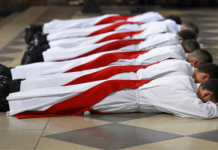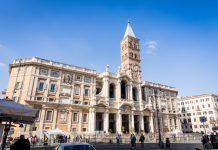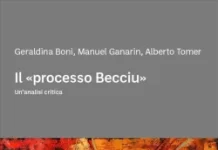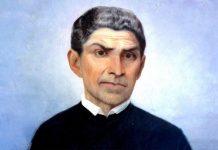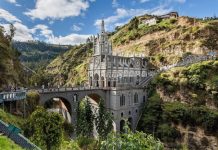Men form for themselves environments in their image and likeness, environments in which their customs and civilization are mirrored. And the environments form men, customs, and civilizations in their image and likeness.
Newsroom (26/10/2022 10:18, Gaudium Press) At the end of the 11th century, an abbot of a monastery in France, having become paralyzed, was admitted to the Abbey of Cluny. One night he had a vision of St. Peter the Apostle, who ordered him to tell the superior – St. Hugo – to arrange for the building of a large church. He added, “If you obey this order you will be cured; if the superior does not obey it, he will be paralyzed.”
Masterpiece of Romanesque Art
Then St. Peter showed the sick man the picture of the temple, indicating its measurements, and told him not to worry about the expenses, because God would grant the necessary donations. It was the year 1089.
As soon as he heard this message, Saint Hugo, in accordance with the project indicated by the Apostle, began the construction of the Basilica, whose greatness and pulchritude have marked history. The architect was a monk from Cluny.
Bishops, kings, princes, nobles, and members of the people came with donations, arms, and beasts of burden.
In 1131, the Basilica was completed and dedicated by Pope Innocent II. It was the largest church on earth: 125 meters long and 37 meters wide; it had five naves, two towers each 43 meters high. It was the “masterpiece of Romanesque art.”[1]
Trained by the monks of Cluny, sculptors crafted beautiful images that adorned the temple, thus helping the piety of the faithful.
Importance of the environment
Every person is influenced by the environment in which he finds himself, as Dr. Plinio Corrêa de Oliveira explains.
“Men form for themselves environments to their image and likeness, environments in which their customs and civilization are mirrored. But the reciprocal is also true to a large extent: environments form men, customs, and civilizations in their image and likeness.
“In pedagogy, this is trivial. But does it apply only to pedagogy? Who would dare to deny the importance of environments in the formation of adults; formation, we say with all propriety, for in this life man, at all ages, must devote himself to the effort of forming and reforming himself, thus preparing himself for Heaven, which is only where our march to perfection ceases.”[2]
The mission of art is to retrace this ambiance, so that people will tread the path of goodness and be led to Heaven. This is true art inspired by the Church, while the Gnostic and egalitarian Revolution does the opposite, that is, it creates environments that instigate evil and leads souls down a ramp that leads to Hell.
Differences between the Classical and the Romanesque styles
To understand the Romanesque style properly, we must compare it with the Greek, or classical, style that preceded it.
Greek buildings are solid, but not fortress-like. One would say that the Greek style is concerned with hiding the strength of the building under the appearance of lightness, of elegance.
The Greek column is as slender as possible, resembling the trunk of a palm tree. The columns and the whole Romanesque building have something of the walls of a fortification, and give the spirit an idea of struggle which is in no way present in the aspect of the perfection of the universe that the Greek building wants to sustain and manifest.
For example, looking at the Parthenon – the famous monument built in Athens – no one can say, “Oh, what a struggle!”
When considering a Romanesque building one has the impression of a man carrying a serious weight, arduous worries, but that by the help of divine grace he has the strength to face the difficulties and move forward.
But then comes the stained glass window, which introduces into all this a certain form of beauty, which completes that frown of the Romanesque building with something akin to madness.
The Romanesque building is very thoughtful, somber. The colors of Romanesque stained glass, although they do not express joy, speak of a kind of wonderful sweetness, which is closely connected with the meditation on God of the weary man, who finds the well-being of consolation; it is properly Christian consolation.
From Romanesque came the Gothic style. In order to understand the superiority of the latter over the former, Dr. Plinio clarifies:
“To the desolate man who enters a Romanesque style building, it seems to say affectionately, ‘Sit down, I will help you in your suffering.’ The Gothic sort of says the opposite: ‘Make quick contact with me and your suffering will soon pass. I’ll take you to the regions of heaven. It is the arms of God that are lowered to lift man up. It is like a mother bending over a little child who has difficulty walking and suspending him[3].
Beauty in the Medieval World
By analyzing medieval works: churches, monasteries, castles, peasants’ houses, knights’ armor, illuminations made by copyists, etc., one can see that they expressed beauty. How did this desire for pulchritude come about?
“There is an initial state of mind from which is born a series of criteria for seeing and analyzing things, rejecting some and accepting others, and then battling against some and in favor of others, building some and demolishing others. […]
“What do I call a state of mind here?
“It is the innocence seen in the position taken by it when it contemplates the highest truths it is called to contemplate. But it is a tranquil, serene state of soul, a kind of fundamental, central matrix, from which all the rest starts. […]
“This state of mind was the starting point of the Middle Ages, which was itself insofar as it rode, prayed, struggled, built towards it. And all that we contemplate of beauty in the medieval world is reduced to that state of mind […]
“So the armor of the knight, the crown of a king, the pulchrum of a village, the stability of a corporation, the majesty of a castle, in short anything medieval is one of the secondary states of mind, derived from this great central state of mind.
“And I think that this state of mind lived and expanded from Cluny. And more remotely from the person of St. Benedict.”[4]
The French Revolution, driven by hatred of goodness, truth and beauty, destroyed the Basilica of Cluny as well as the adjacent buildings.
By Paulo Francisco Martos
Compiled by Camille Mittermeier.
__________________
[1] DANIEL-ROPS, Henri. The Church in Barbarian times. São Paulo: Quadrante. 1991, v. II, p. 591.
[2] CORRÊA DE OLIVEIRA, Plinio. In Catolicismo. Campos dos Goytacazes, January 1954.
[3] Idem. Archetypalization. In Dr. Plinio magazine. São Paulo. Year XXII, n. 259 (October 2019), p.35.
[4] Idem. innocence and state of mind. In Dr. Plinio magazine. São Paulo. Year XVI, n. 180 (March 2013), p. 24,26,27.



